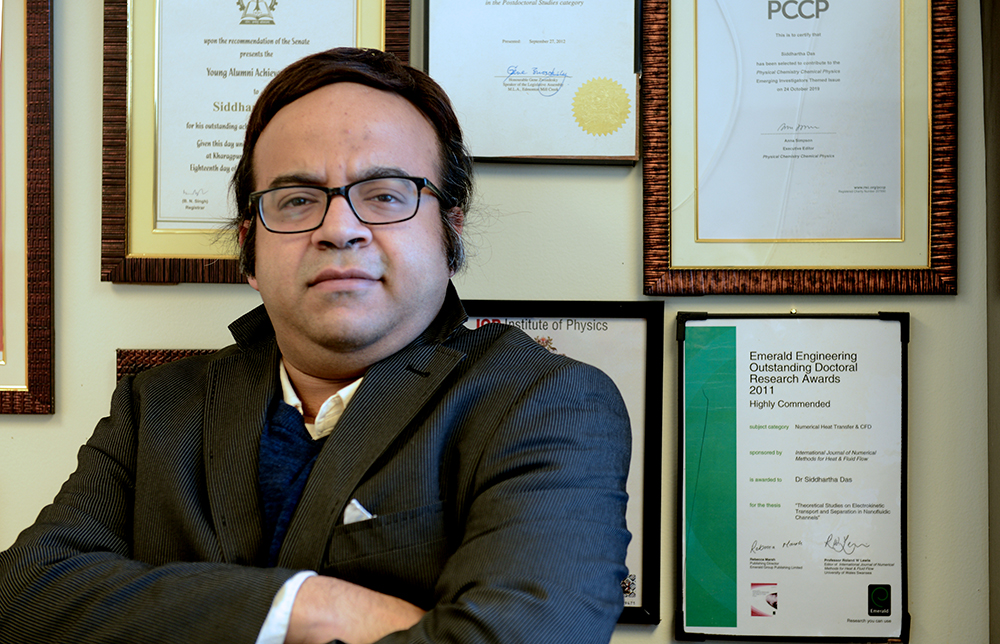U.S. DoE Renews Funding for Polymer Research
Siddhartha Das, associate professor of mechanical engineering at the University of Maryland, has received renewed funding from the U.S. Department of Energy (DoE) to further advance his group’s work with atomistic simulation of polymer molecules. Das and his team of doctoral and post-doctoral students have become pioneers in this area, with their research yielding new insights into the behavior of water molecules and ions when they interact with polymers, and into the manner in which the behavior of such polymer-supported ions and water molecules can be leveraged for unprecedented liquid transport inside tiny, tube-like structures known as nanochannels, which are grafted with ion and water supporting polymer molecules. Das’s DoE-funded research is concerned specifically with nanochannels as a means of energy harvesting, storage, and conversion. Liquid transport in charged nanochannels that have been “functionalized”--that is, adapted to some purpose—can be used to generate electric energy by converting mechanical and chemical energies, among other applications. A common way to functionalize nanochannels is by grafting charged polymer molecules onto their inner walls. But more needs to be understood about how doing so affects the behavior of molecules and ions in the system. Das’s DoE-funded research aims at understanding how differently charged polymer molecules, in the presence of ions with different charges, will regulate the energy harvesting, storage, and conversion in nanochannels that are functionalized in this way. Das has been using atomic-level simulations to gain more precise insights into molecular behavior than is possible with the methods commonly used so far, including experimental methods and an approach known as “coarse-grain simulation.” “Imagine that you could create a tool that not only interprets the interactions but can tell you the detailed environmental story, what’s happening in the environment of these bodies, and how the environment is affected as they interact with each other,” Das said. “That level of resolution is being achieved by our group.” Their work, he said, has been made possible by the interdisciplinary flexibility encouraged at the UMD mechanical engineering department and at Maryland Engineering as a whole. It also relies on the university's supercomputing cluster, known as DeepThought2. “The level of computational complexity involved in these simulations is immense,” Das said. “It wouldn’t be feasible without these computing resources.” The atomistic approach being pioneered by Das and his students has resulted in several papers, Including papers in ACS Nano (October 2021 and April 2021), Matter, and Macromolecules. A member of the UMD mechanical engineering faculty since 2014, Das is a Fellow of the Institute of Physics and also a Fellow of the Royal Society of Chemistry. For more information about his research, contact him at sidd@umd.edu.
Related Articles: February 14, 2022 Prev Next |
|


